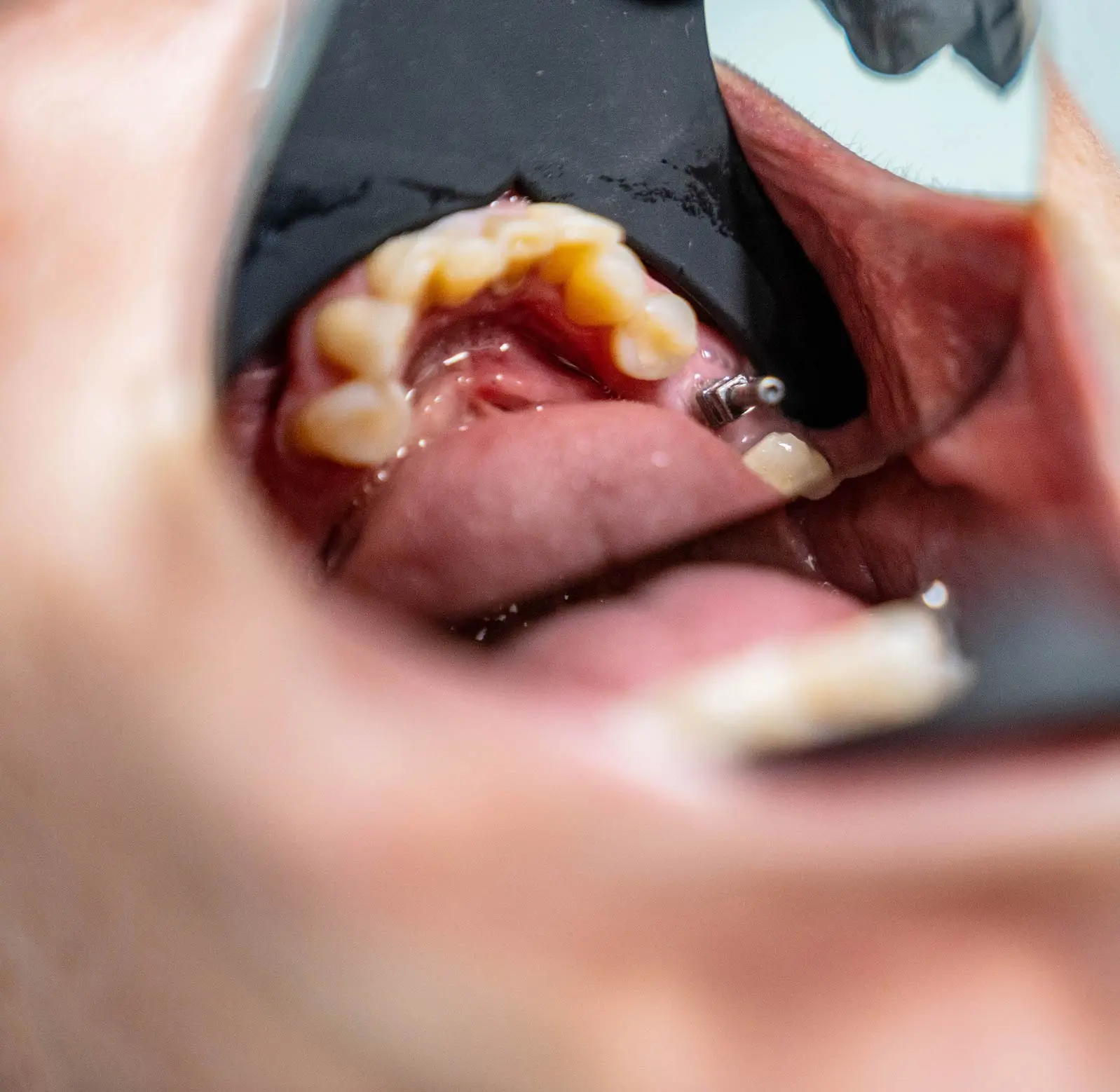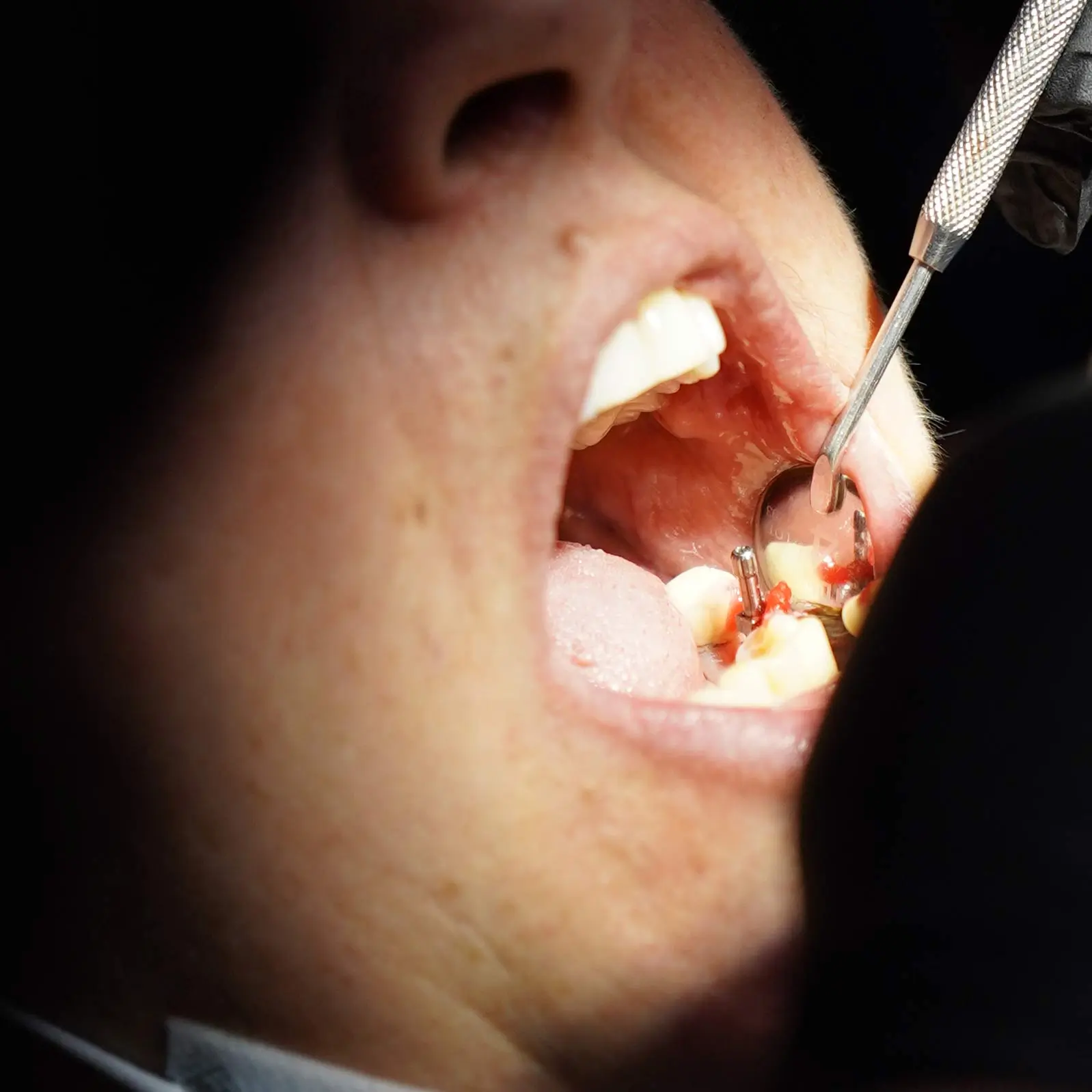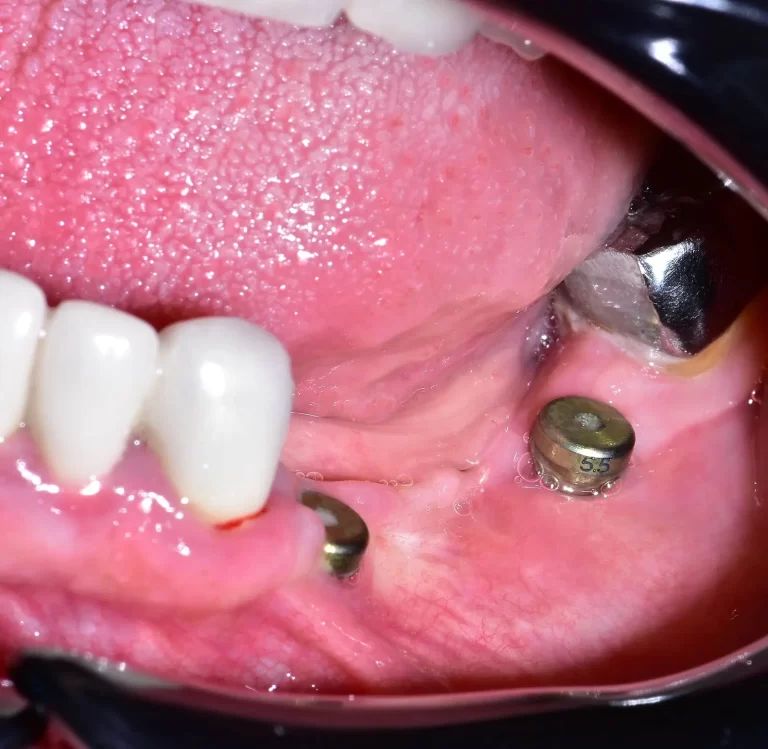Assessment and planning: for planning implant treatment at Dentoria, we have a digital panorama, 3shape intraoral scanner and CBCT 12×9 (computed tomography), which represent the latest and best innovation in dentistry, to assess the density and amount of remaining jawbone, as well as the direction and location of implant placement in the jawbone, and to determine whether you are a suitable candidate for dental implants, or whether additional interventions are required to increase the volume of the jawbone using graft materials or sinus lift.



The first phase begins with the application of local anesthesia at the site where the implant will be placed, followed by a short 15-minute intervention to insert the implant into the bone, followed by a 3-month period during which the implant is expected to bond with the bone, the so-called osseointegration period. The strong bond of the implant to the bone depends mostly on the design of the implant surface, and today there are implants that can be loaded with temporary teeth immediately after implantation, and thus you can leave our office the same day with completely restored aesthetics, speech, comfort and chewing function.
Note: After the implants are placed, swelling and discoloration of the cheeks in the area of the implants may occur, as well as a dull ache due to the pressure exerted by the implants on the bone. Swelling can be easily resolved by placing cold compresses on the cheeks, which are kept on throughout the day of the intervention at 5-minute intervals with a break of 15 minutes between each interval, and anti-swelling tablets. The pain will also be alleviated with an analgesic recommended in our office.
The second phase of dental implant construction is a minor intervention under local anesthesia, to expose the implanted implants after the 3-month period and place a gingivoformer that will ensure proper formation of the palate around the implanted implant. After this, an abutment is placed, a part that is screwed onto the implanted implant, protrudes above the palate and represents a replacement for the tooth stump, over which an impression is then taken and the artificial teeth are made.
Maintenance: very important after the implantation of dental implants is their periodontal maintenance and the arrival of scheduled check-ups. If your choice is the implantation of dental implants, Dentoria is the right place to do it, where Dr. Ertan, who is a specialist in periodontology, will guide you through the entire implantation process, and then the maintenance of your implants and their long-term preservation.
At Dentoria, we only use screw-retained implants, meaning the connection between the implanted implant and the artificial crown is made using screws, which is the most modern and much better option than cementing. In this way, the implants have greater durability and minimal risk of developing implant diseases (perimucositis and periimplantitis). By unscrewing the screw itself, the artificial tooth can be easily removed, the necessary cleaning and maintenance can be done, and it can be screwed back into place.
Implant placement can be:
Immediate, i.e. when the implant is placed immediately after the extraction of the natural tooth, in its place in the jawbone, and
Medially, after a certain period of time from the extraction of the natural tooth.